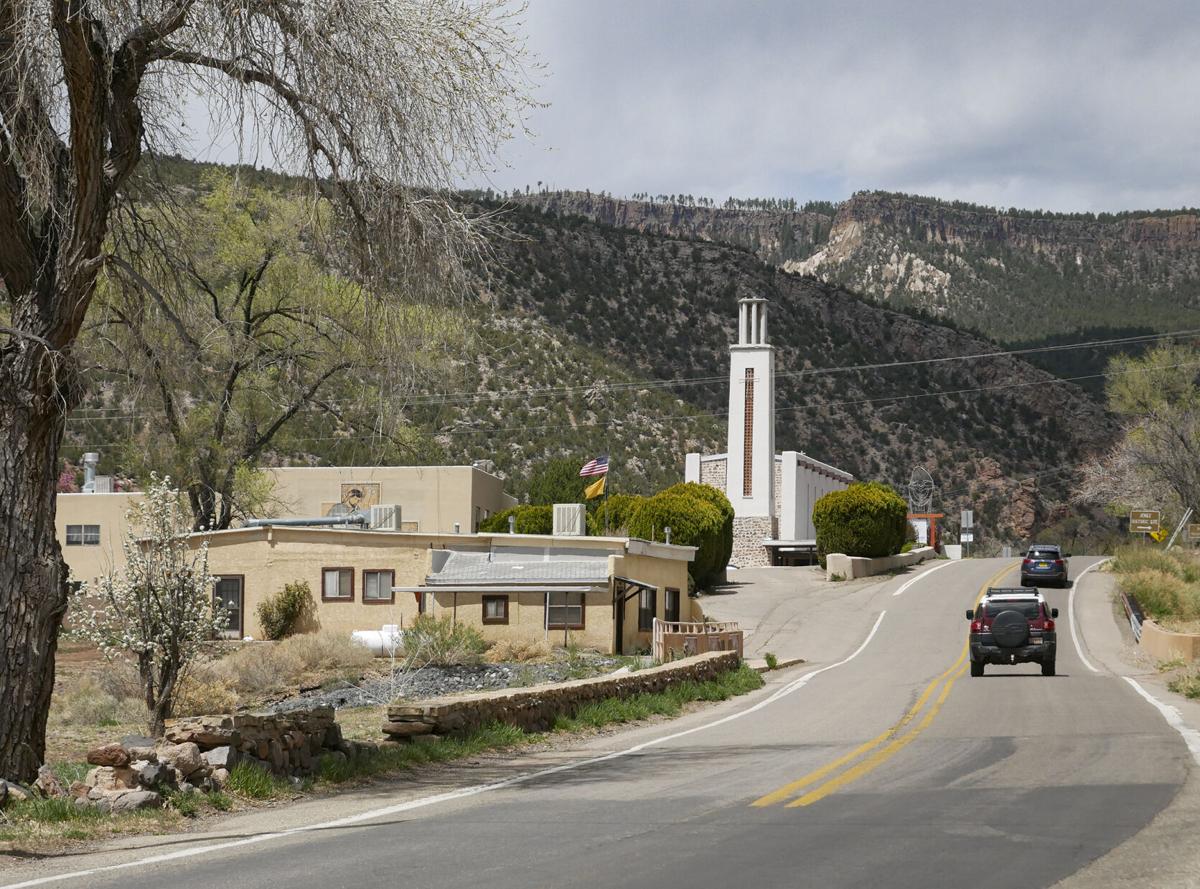JEMEZ SPRINGS (NM)
Santa Fe New Mexican [Santa Fe NM]
April 25, 2021
By Rick Ruggles
[Photo above: The tower of Mary, Mother of Priests Catholic Church rises along N.M. 4 in Jemez Springs. Matt Dahlseid / The New Mexican. See also the front page of the newspaper with this article.]
What remains of the Servants of the Paraclete here is a wisp of the Catholic order that thrived in this mountain town a few decades ago.
The ministry that drew hundreds of priests to Jemez Springs for nearly 50 years, treating them for problems ranging from alcoholism to pedophilia, shows hints of its old self. But its history is inescapable as the Archdiocese of Santa Fe continues to raise money to settle lawsuits filed by dozens of people who say they were sexually abused by priests.
Opened in 1947, the Paracletes’ properties appear to be mostly empty. There may be as few as two priests and one brother there. One building north of town is for sale. But plaques, signs and other items reveal a time when the Servants of the Paraclete was a big, if reclusive, organization in town.
A park is named after the founder of the Paracletes, the Rev. Gerald Fitzgerald. A corkboard with notes tacked to it says the possibility for retreat remains at the organization’s motel-like facility. One 1963 plaque on a church’s exterior suggests the gratitude for a Paraclete co-founder should “ring out for many centuries over this canyon.”
But the echoes, victims of clergy abuse say, tell a different story.
The retreat, some plaintiffs have said, created a flood of priests who, after leaving the Paraclete, remained in New Mexico — some still plagued by the problems that brought them to the facility in the first place.
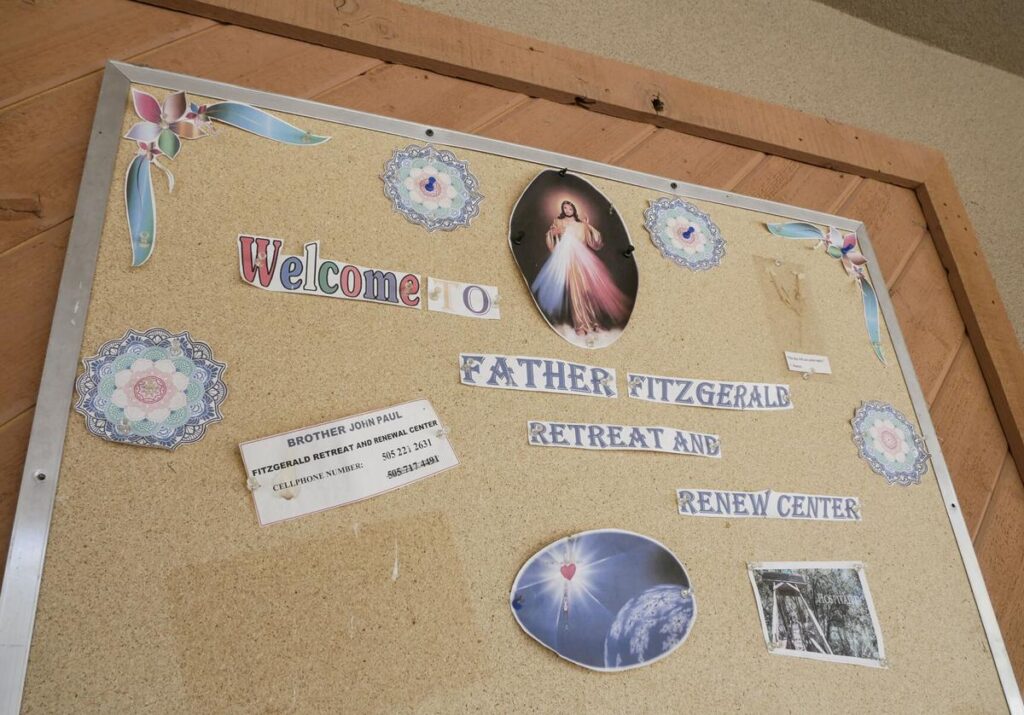
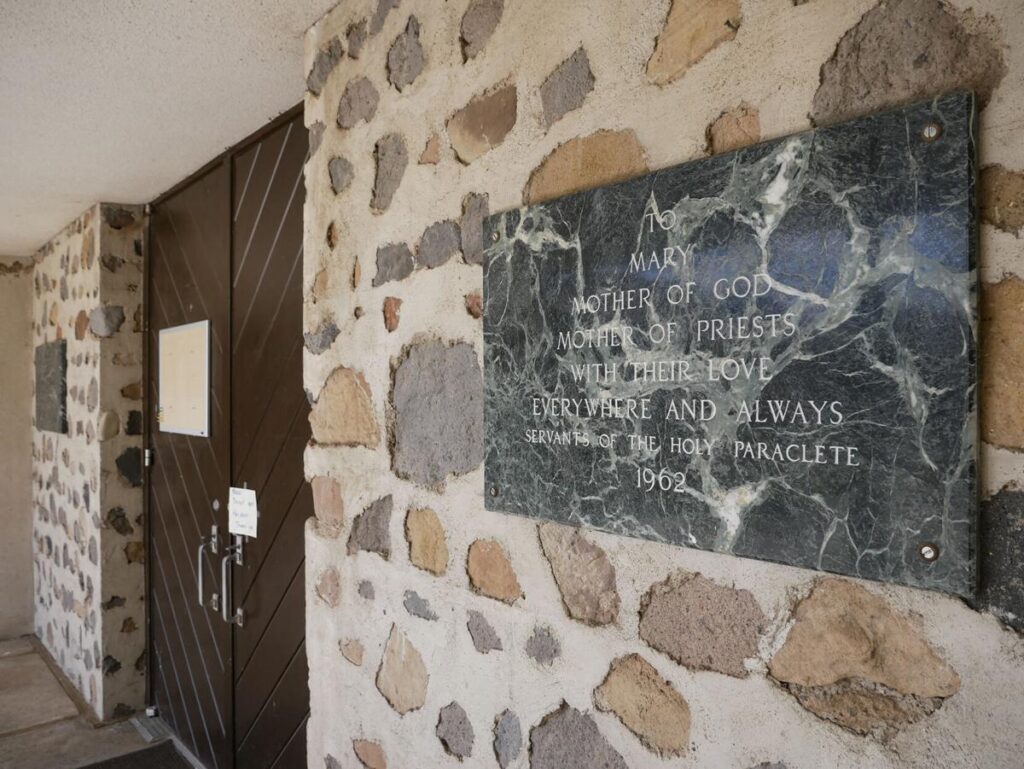
Some committed sexual abuse in parishes throughout the Archdiocese of Santa Fe, leading to a torrent of lawsuits. The first wave came in the 1980s and 1990s. A batch also has been filed in the past several years. The inability of church leaders to deal with the problem, plaintiffs’ attorneys have contended, created the storm that continues to torment New Mexico’s Catholic Church.
Levi Monagle, an Albuquerque attorney who represents victims of abuse, said the Paracletes generally don’t deserve to be viewed as noble scapegoats.
“I would absolutely contend that the presence of the Servants of the Paraclete played a significant role in the prevalence of child sexual abuse throughout New Mexico for many decades,” Monagle said. “I don’t think anybody can seriously contest that reality. They were importing serial pedophiles into the state and releasing them into local parishes without warning.”
Exactly how the Servants of the Paraclete arrived in New Mexico provides context for the next 60 years. Fitzgerald envisioned his Paracletes dealing with alcoholic, exhausted and emotionally struggling priests. As sexually troubled priests began to arrive at bishops’ insistence from around the country, Fitzgerald called pedophiles “vipers” and “devils.”
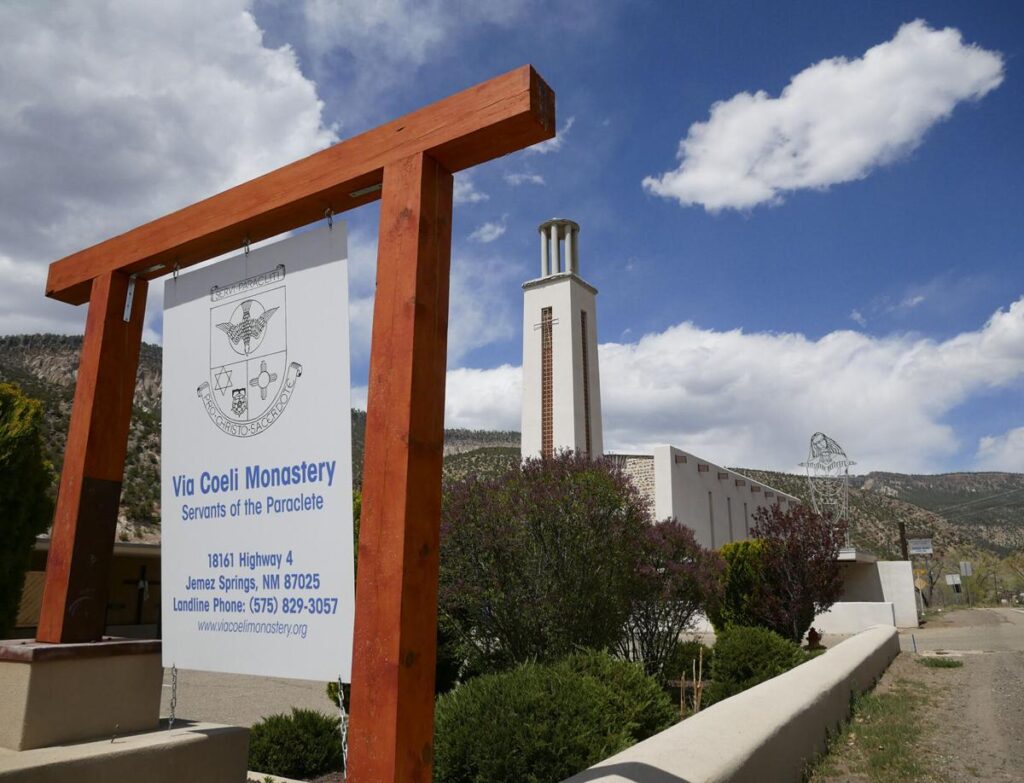
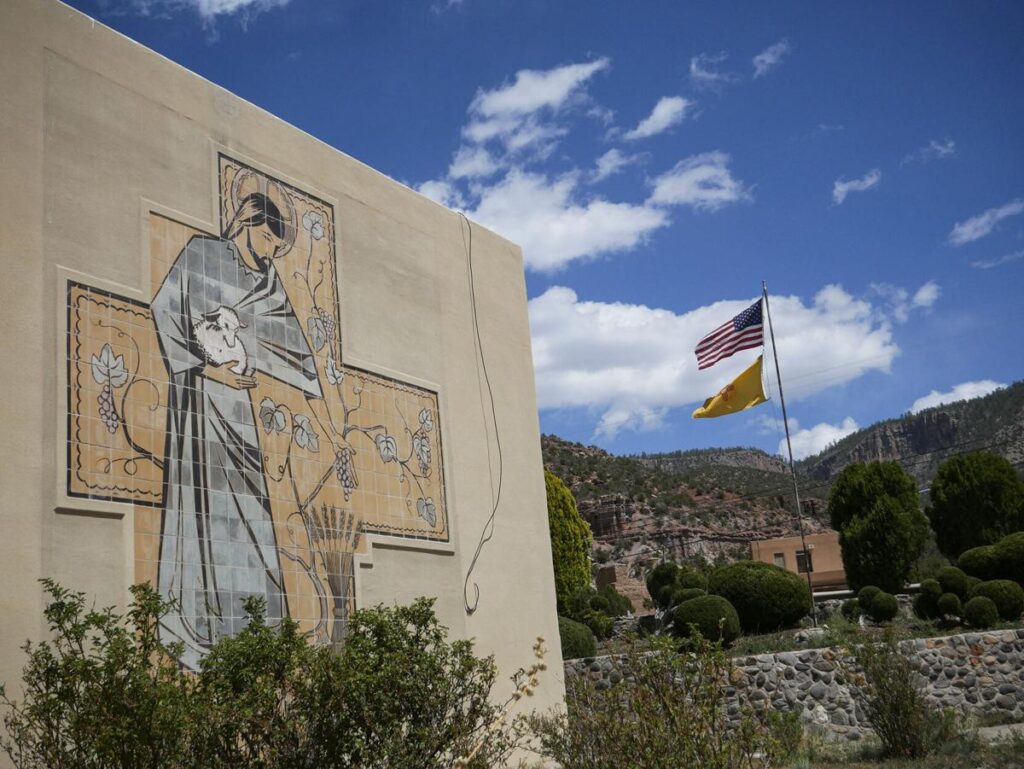
Evidently he had little choice but to take them in. Fitzgerald hoped to place them on a Caribbean island and put down money for one. Archbishop James Davis ordered him in 1965 to drop the notion.
Minutes from a 1967 meeting in Santa Fe involving Davis, priests and a psychologist of the Paracletes make clear the intention to move treated priests from Jemez Springs into parishes:
“In placing men in the parishes, the Archbishop would use his judgment … informing the pastors only of what he thought they must absolutely know about the priest. … No details or particulars of a clinical nature need to be made known regarding the man’s past history.” [Note from BishopAccountability.org: See the full text of the minutes.]
Decades later, with the archdiocese facing bankruptcy, officials are in the process of auctioning as many as 732 properties to raise money to pay settlement claims. Most of those properties are vacant parcels of a couple acres or smaller, many donated to the church by families.
Court records over the past year also show the church has sold or will sell at least six other properties. Among the more notable: The Immaculate Heart of Mary Retreat Center in Santa Fe has an offer of $6.4 million.
The archdiocese hopes to limit sales to nonessential and vacant properties. The Rev. Glennon Jones, vicar-general of the archdiocese, said late last week that what qualifies as essential property is subjective, but it “encompasses those properties vital for continued operation and for our core mission of evangelization and worship.”
Jones wrote early this month that if the bankruptcy settlement fails, “nothing is safe from liquidations … churches, halls, schools. Nothing.”
Finances, the Rev. Bill Sanchez said, aren’t the source of the church’s misery.
“The parishes were hurt when victims were abused,” said Sanchez, who heads St. Joseph Parish in Cerrillos. “There’s many that have never come forward but still live with that pain and trauma throughout their lives.”
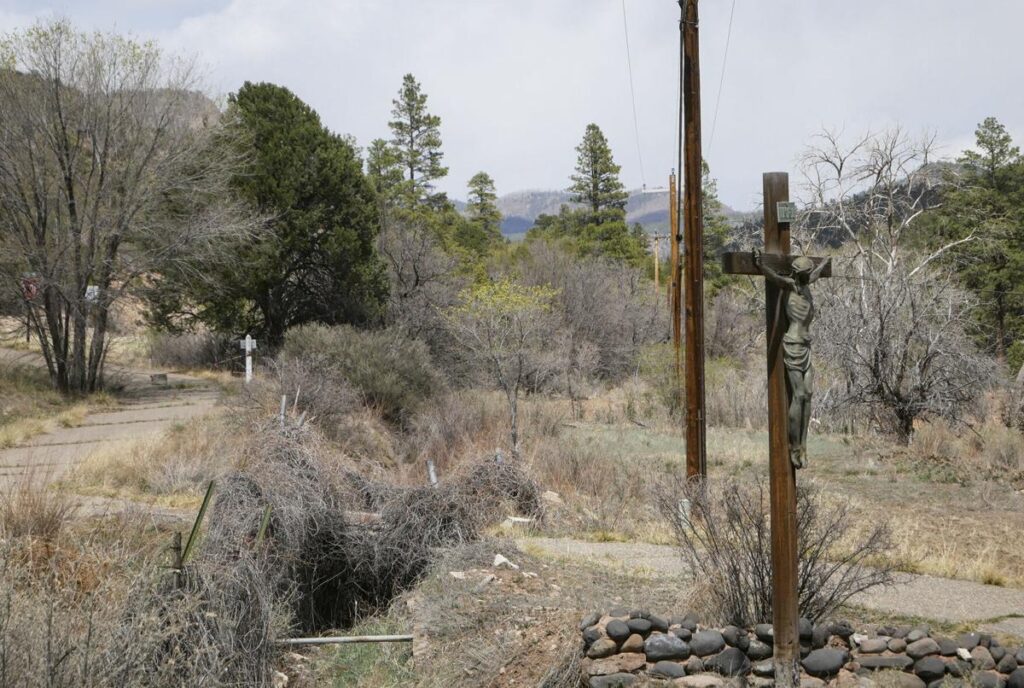
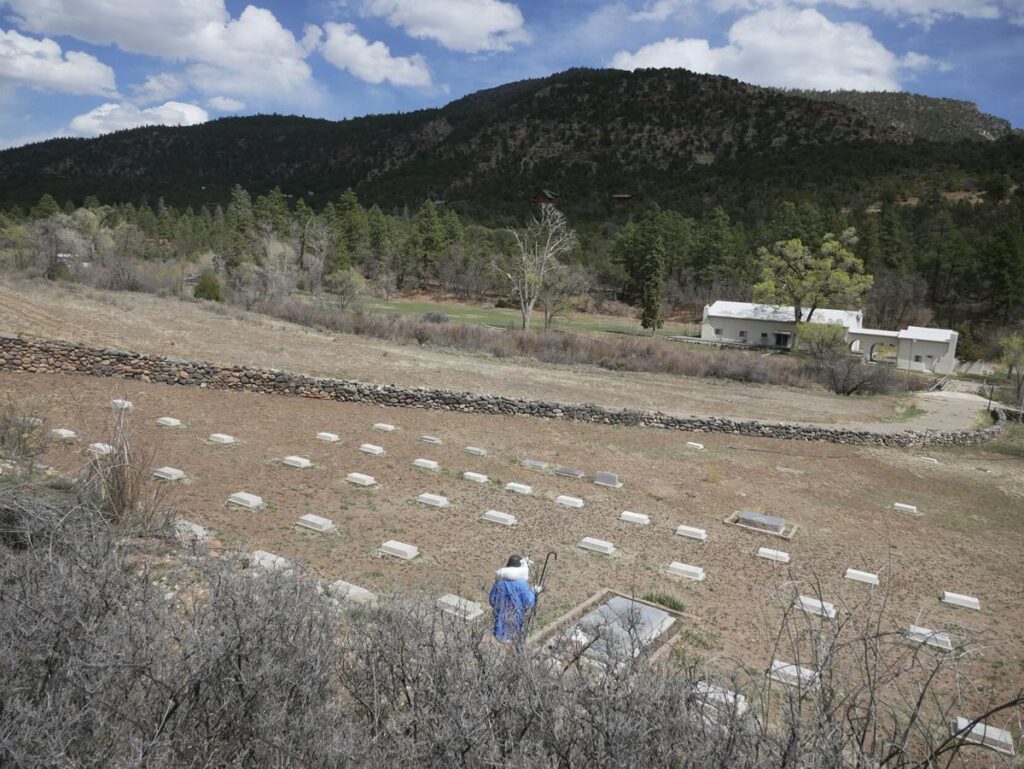
Troubled history
In Jemez Springs, the termination of much of the Paracletes’ work in the 1990s is vague history for some.
“Occasionally we get people through that are curious about it,” said librarian assistant Amanda Lewis. “I haven’t been asked much in the last few years.”
When day spa owner Sarah Swarttouw came to Jemez Springs four years ago from North Carolina, her friends looked up the town on the internet and read about its infamous recent past.
“You know where you’re moving?” they asked.
Swarttouw and her husband, Cornelis, planned to visit the town to enjoy its hot springs but were captivated by the beauty around them. They stayed.
The specter of the Paraclete, she said, “does feel like something that came and went.”
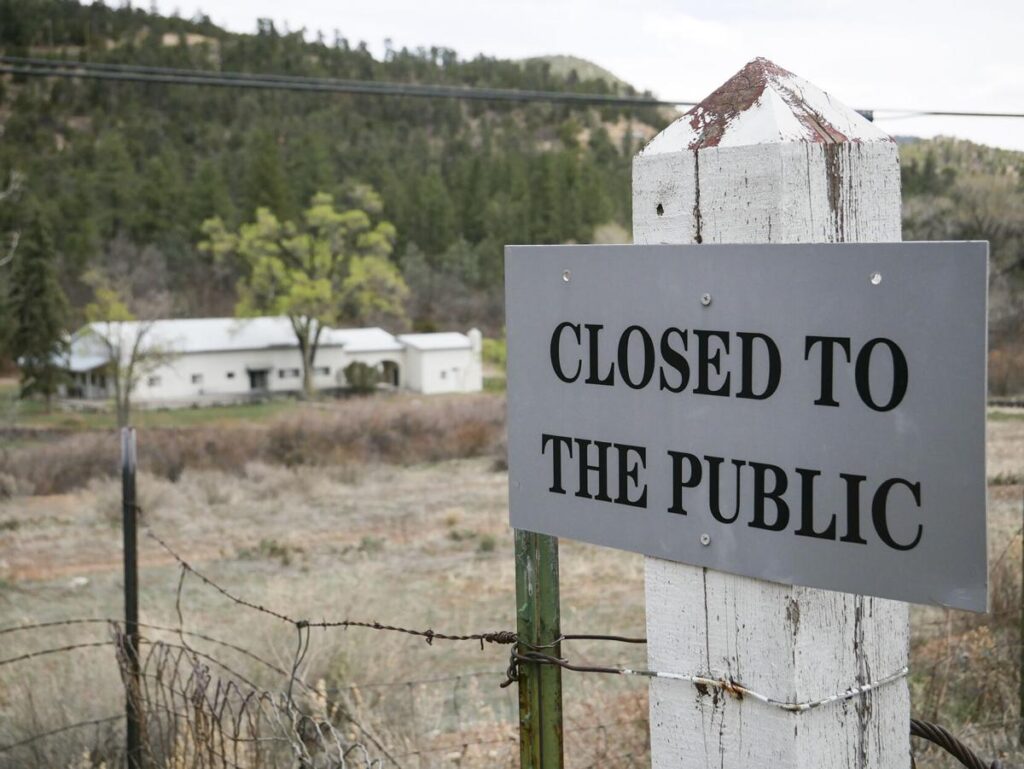
Some Jemez Springs residents aren’t as placid about their town’s connection to the facility. A woman who declined to identify herself said she resented inquiries.
“There’s one priest here,” she said. “There’s really nothing left of that era. … We don’t want that onus on our community. … It’s horrid.”
The Rev. Vincent Paul Chavez, an Albuquerque priest at St. Therese Little Flower Church, said he knew of the Paraclete in part because his brother did a pastoral assignment or internship there in the 1980s. Chavez said it was a good organization, “and I really feel for them because I have the highest regard for them.”
Their goal, he said, was to minister to priests in crisis. Fitzgerald opposed scientific treatment and believed the beautiful environs, priestly support and religious devotion were the keys to healing alcoholics and the emotionally sick.
Chavez said that by the 1980s, the Paracletes had adopted clinical strategies and utilized people trained in counseling and psychological therapy. They even hosted a conference in 1987 in which leading experts from around the nation discussed sexual abuse against children.
The priests at the Paraclete were noble in their work, many had psychological credentials, “and they were doing the best they could,” Chavez said. But when New Mexico’s abuse scandal broke in the early 1990s — long before others in Boston; Nova Scotia, Canada; and elsewhere — it drew a national outcry.
Catholic leaders “hung them out to dry and blamed the whole thing on them,” Chavez said. He later softened that statement to say that “U.S. Catholic hierarchy distanced themselves from the Paracletes.”
The Paracletes (paraclete is defined as a helper or an advocate) now have a small ministry in Missouri. Its leaders didn’t respond to emails. A man in Jemez Springs who identified himself as Brother Bernard said he and the two other Paracletes still do ministerial work in town.
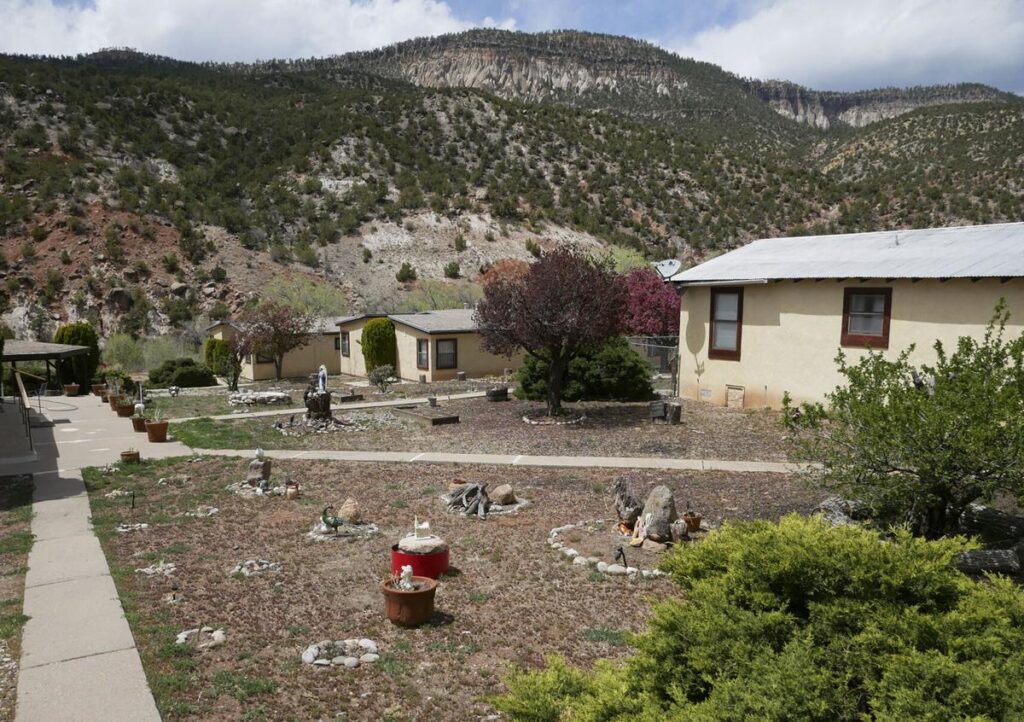
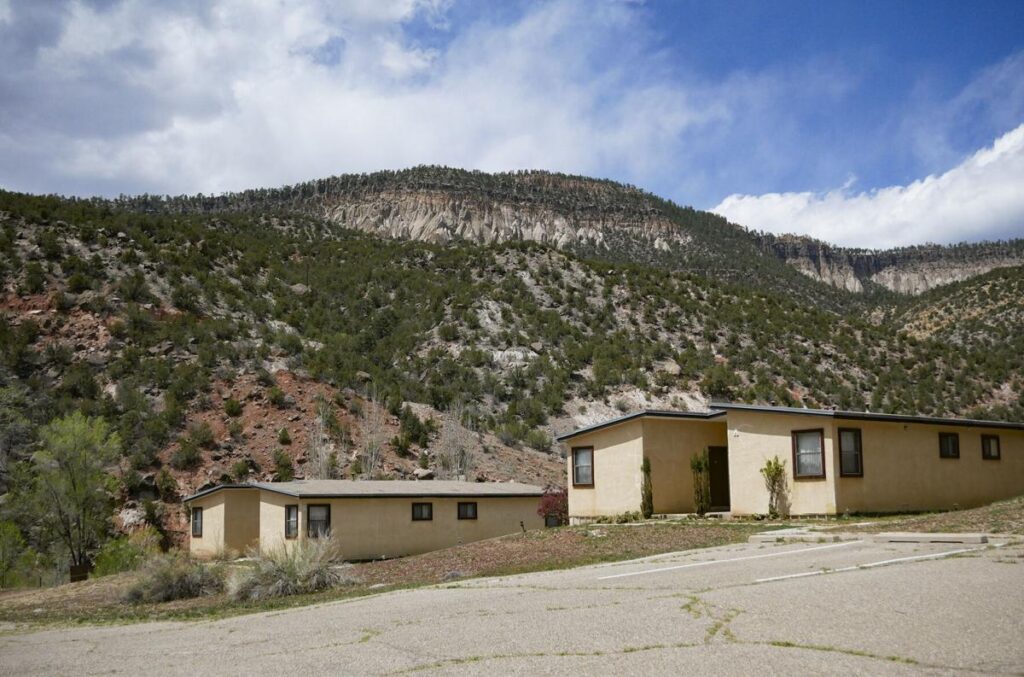
A 2018 grand jury report in Pennsylvania said priest-run treatment facilities in New Mexico, Pennsylvania and Maryland “provided plausible deniability to the bishops and permitted hundreds of known offenders to return to ministry.” The report also cites a case where a priest “admitted to the indecent touching of [a] boy while at Jemez Springs Center in New Mexico.”
Lawrence Volgare, a plumber since 1990 in Jemez Springs, said for the most part “they didn’t bother anybody here.” He said he was in the town’s Los Ojos Restaurant and Saloon one day and ran into five or six priests. “I said, ‘They let you guys out? You got a pass?’ They didn’t say anything.”
A Jemez Springs website run by the local library said the Servants of the Paraclete at one point was “one of the largest property holders in the valley.”
But by the early 1990s, the order was on the defensive. The Rev. Liam Hoare, who headed the Paracletes in the late 1980s and early 1990s, said in a 1993 affidavit: “We have never viewed ourselves as the protectors of pedophiles. … Our goal is to prevent the sexual abuse of children.”
He added: “Any decision concerning the assignment of a priest to particular duties, the removal of a priest from particular duties, informing parishioners about a priest’s past misdeeds … and things of that nature, all are within the province of the priest’s bishop or major superior, not Servants of the Paraclete.” [Note from BishopAccountability.org: See the full text of the Hoare affidavit.]
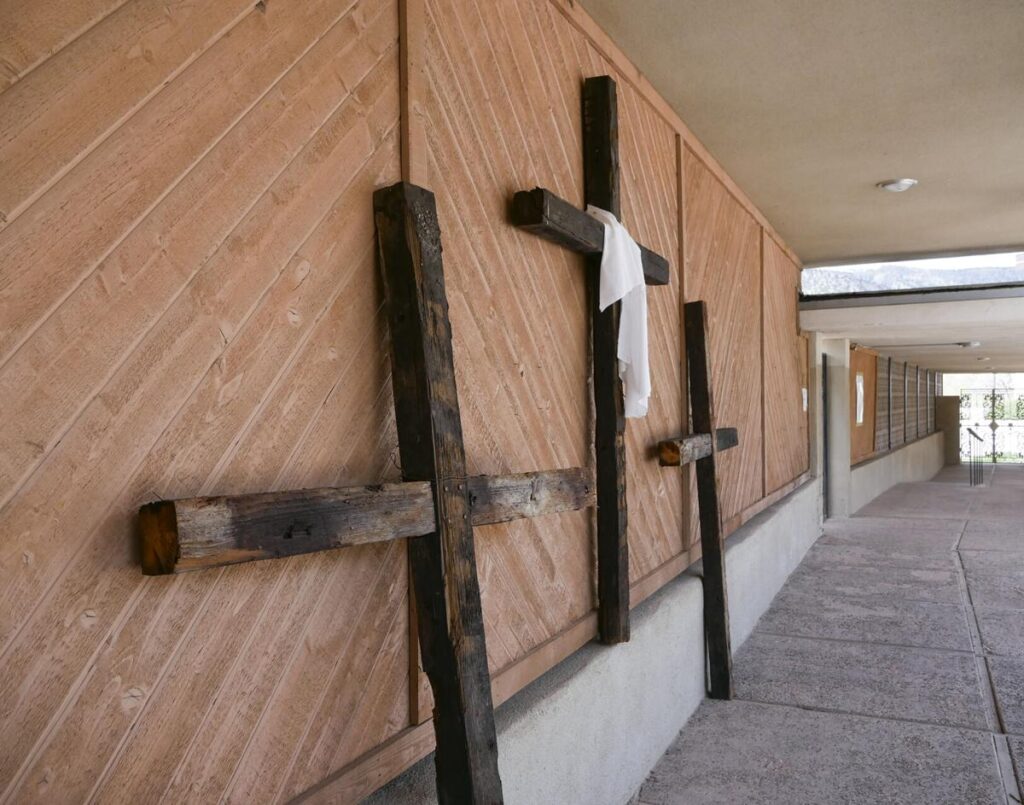
Sanchez noted pedophilia and sexual abuse are not limited to clergy. He cited crises faced by the Boy Scouts, schools and the U.S. Olympic Committee as examples. It’s a world in which “innocents are preyed upon,” he said. The Paracletes tried hard to help and did as well as they knew how, he said.
Now the archdiocese asks those in his small Cerrillos parish and elsewhere “to contribute and donate money from our savings, and we are doing that,” he said. “We have a beautiful faith.”
Churches, schools and parish halls appear to be safe from sale in the bankruptcy proceedings, he said.
“They’re not asking us to do that,” he said. “Yet.”

